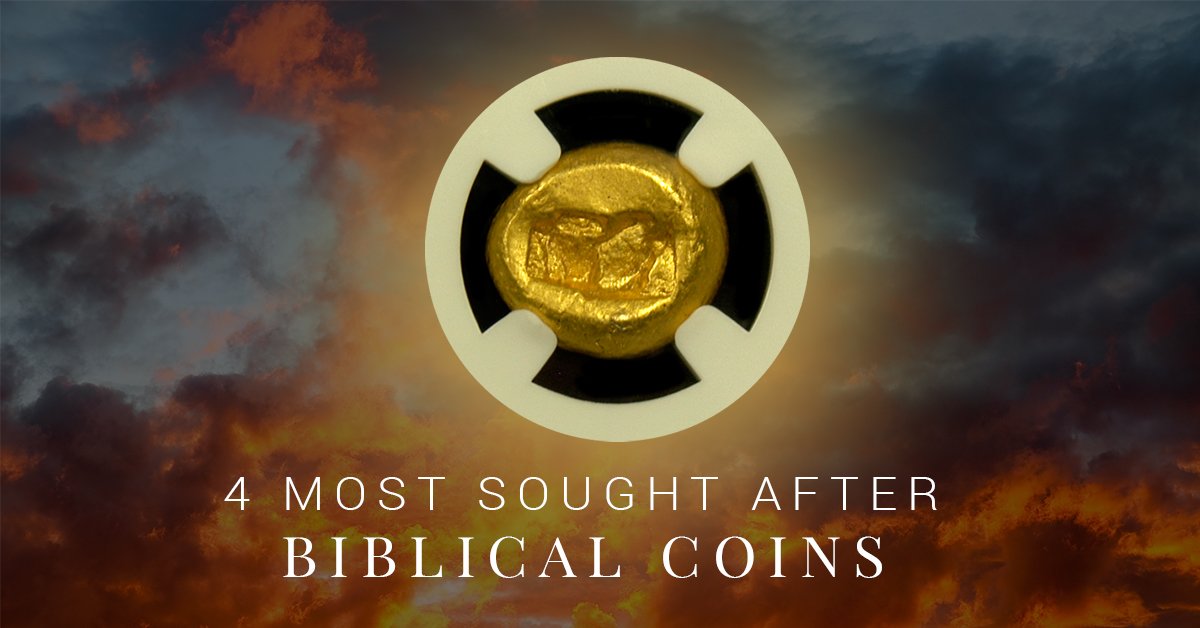4 Most Sought After Biblical Coins

When people begin collecting rare and valuable coins, it’s not uncommon for them to set goals. Sometimes they spend a lifetime seeking out coins that are legendary. These can be both vanishingly rare, and also occupy a particular space in world history. For those who dedicate their lives going after Biblical coins, there are a number of different approaches to collection.
Some collectors aim to obtain coins from every city mentioned in the Bible, while others go after coins that are associated with individuals. But there are 4 famous groups of coins that are well known to the devout, to committed numismatists, and to the general layperson. Read on to learn about the 4 most sought after coins mentioned in the Bible.
-
Thirty Pieces of Silver-In Matthew 26:15-16, 27:3, and 27:5-6, we learn about how Judas Iscariot was paid to betray Jesus. His price was 30 pieces of silver. After the crucifixion, Judas was overcome and threw away the coins. These coins are part of one of the most significant events in the New Testament, and they are highly desired by collectors. The silver coins were most likely shekels that were minted originally from the coastal city of Tyre, located in Phoenicia.
-
Tribute Penny-Matthew 22:21 mentions one of the famous quotes by Jesus, where he said, “Render unto Caesar the things that are Caesar’s, and unto God the things that are God’s.” This was part of a debate about the legality of the Jews paying taxes to the Romans. Jesus used a coin, but the question is, what kind of coin? Nobody is entirely sure, but the coin must have been made before Jesus said this, and it probably had an image of an Emperor along with the name of the ruler. Many numismatist believe the coin was a silver denarius with an image of Tiberius.
-
Widow’s Mite-Some of the most well-known passages in the Bible are Mark 12:41-44 and Luke 21:1-4. These concern the donation of “two mites” to the treasury by a desperately poor widow. It’s a moment of incredible charity, since the widow was destitute, and she still gave what she could. This was more of a pure sacrifice in comparison to the wealthy who were able to donate vast sums. The “mites” were probably small bronze coins, and it is believed that they were either leptons or prutot struck at some point between 135 BC and 37 BC.
-
Pontius Pilate-The arrest and trial of Jesus is covered in John 18:33-35, and in Matthew 27:1-2, 27:22-26, and 27:57-58. During that time, the Roman procurator, or governor, of Judea was Pontius Pilate. He occupied a strange historical place, where he was right between the amazing acts of Jesus and his ministry, and the hierarchy of the Jewish priesthood who sought to punish Jesus for blasphemy. There are no bronze coins bearing the likeness of Pilate. However, the coins he ordered to be struck have an image on one side of three bound ears of barley, and of a ladle on the other.
The coins featured in these remarkable stories existed over 2,000 years ago. Are they still out there? Nobody can say for sure, but when smart and committed people take the time to look, there’s always a chance they will turn up.

